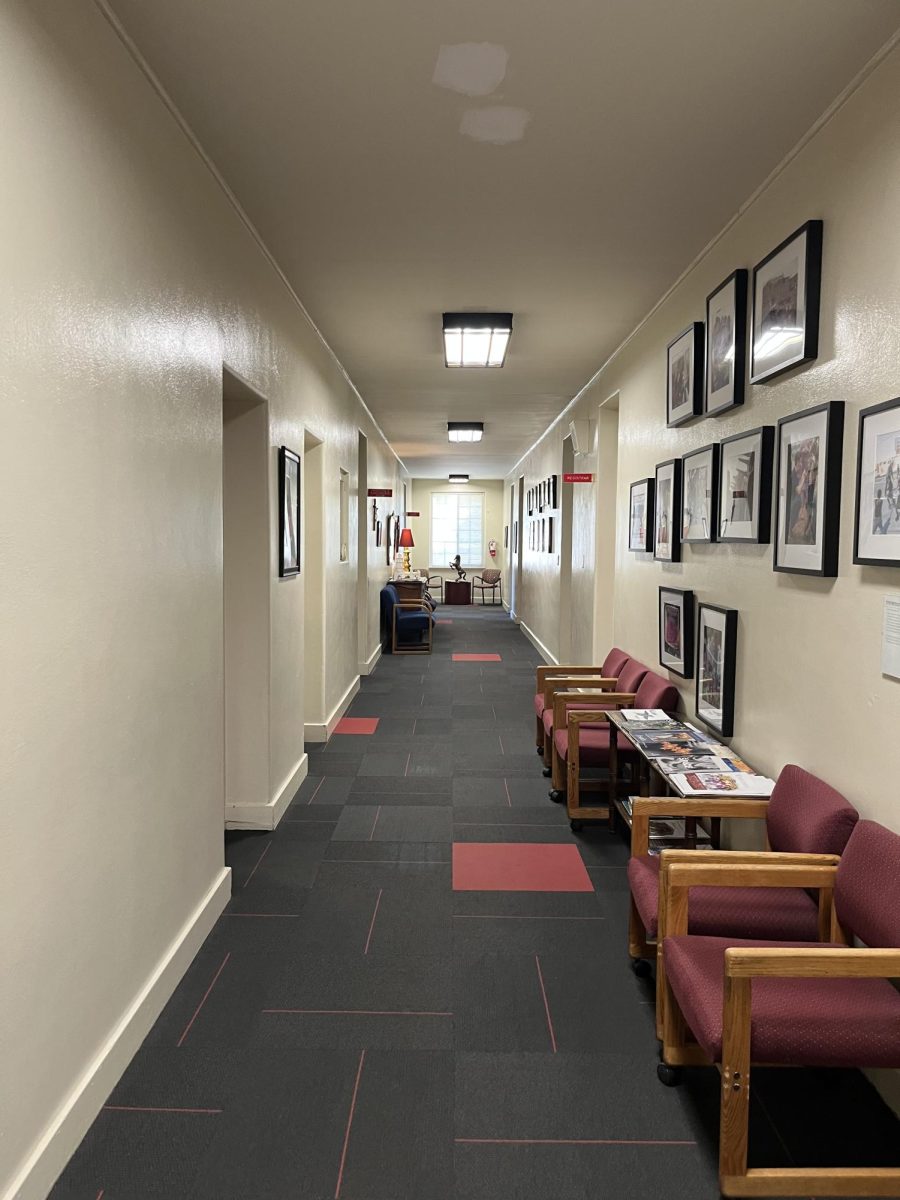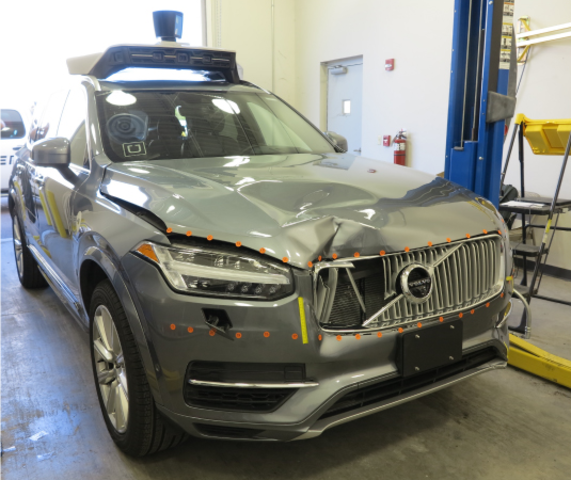The Autonomous Uber vehicle after having collided with a pedestrian on March 18, 2018 in Tempe, Arizona.
By Jackson Moran ’21
THE ROUNDUP
The idea of self-driving, autonomous cars has flourished and grown over the past few years in the cities of Phoenix and Tempe.
At both the municipal and state level, large companies such as Google, with their subsidiary Waymo, and Uber are investing in self-driving technology testing in the state of Arizona.
Arizona governor Mr. Doug Ducey issued Executive Order 2015-09, which permitted these companies to begin trials for self-driving cars, in conjunction with the major public universities in the Phoenix metropolitan area.
“It’s in Arizona’s best interest to embrace new technologies and encourage innovation,” Mr. Ducey said according to the Arizona Department of Transportation (ADOT).
“In this case, it means new jobs, new research opportunities for our universities, increased transportation options for Arizonans and a number of social and public safety benefits that will improve the way we live and get around,” he added.
According to a survey distributed by The Roundup survey, 58 percent of students saw self-driving cars as a positive investment for Arizona and just over two-thirds of them said that they had never noticed, or felt threatened by autonomous vehicles while they were driving.
Among those who took the survey, there was unanimous agreement that the technology is headed in the correct direction.
The order also created a new “Institute for Automated Mobility” and a special office within the Governor’s Office, the “Self-Driving Vehicle Oversight Committee.”
According to the order, this committee would “advise the Department of Transportation, the Department of Public Safety, the selected Universities and any other pertinent agencies how best to advance the testing and operation of self-driving vehicles on public roads.”
One facet of the order was the clause defining self-driving as “A technology installed on a motor vehicle that provides the motor vehicle with the capability to drive without the direct or active control or monitoring by a human operator.”
Human supervision was generally installed by companies on the vehicles, with Uber notably using ex convicts to supply the workforce for these programs.
However, in early 2018, Elaine Herzberg was struck and killed by an Uber self-driving car during the late night hours in Tempe.
This was the first death related to self-driving cars ever reported, and it happened while the car was autonomous, but had a driver inside the vehicle.
There were a number of responses from Uber, the police and the Governor’s office as to how the companies and state would address the issue.
Governor Ducey issued another executive order, Executive Order 2018-04, which worked to “[Advance] autonomous vehicle testing and operating [while] prioritizing public safety.”
It instituted a new set of required documentation for companies that were testing these cars, and created a more accountable system for reprimanding companies who fail to meet these regulations.
“Testing or operation of vehicles on public roads that do not have a person present in the vehicle shall be allowed only if such vehicles are fully autonomous, provided that a person prior to commencing testing or operation of fully autonomous vehicles, has submitted a written statement to the Arizona Department of Transportation…,” said the Executive Order.
Companies too, responded to the accident, with Uber pulling all of their self-driving cars off of Arizona roads and suspending their testing programs in the state.
Only 48 percent of the students surveyed said that they would feel safe riding in an autonomous vehicle for an extended period of time, with 18% of those surveyed saying they would not feel safe.
According to the survey, Brophy students too had some reservations regarding self-driving cars being implemented.
“Self-driving cars, although innovative, still have many issues that need to be resolved before being put to mass commercial use,” said Jack Gallagher ’21 in response to the survey.”I personally would not always feel safe in one, especially in strange weather conditions.”
However, a majority of students have little to no aversion to self-driving cars being tested in Arizona.
Waymo, who also faced minor backlash after their self-driving car was involved in a minor crash in Chandler, continues to test technology in Arizona.
“I can say with some confidence that in situations like that one with pedestrians — in this case a pedestrian with a bicycle — we have a lot of confidence that our technology would be robust and would be able to handle situations like that,” said Waymo CEO John Krafcik.
Aside from these incidents, however, the self-driving vehicles have been relatively safe on Arizona roads.
According to The Roundup survey, Brophy students are generally supportive of advancements in self-driving technology, but show some concern over their implementation as well.
Only 48 percent of the students surveyed said that they would feel safe riding in an autonomous vehicle for an extended period of time, with 18% of those surveyed saying they would not feel safe.
“I wouldn’t feel safe at the moment in a self-driving car,” said Ethan Ripple ’19 in response to The Roundup survey, “because not all cars are self-driving at the moment so other cars’ movements are not easy to predict and I don’t think that the technology is here yet to correctly right the car in all of these situations.”
Many people echoed this sentiment, as the unpredictability of other conditions may affect the vehicle’s ability to work.
Most of those surveyed, about 60 percent, said they would purchase a self-driving car if they showed up on the market, and one of the most common reasons for not purchasing one was their likely initial cost.
“When they first go on the market, as with most new things, the self-driving cars will probably be expensive,” said Xander Black ’21. “I would most likely buy a self-driving car a couple years after they go on the market, as this would allow flaws discovered with self-driving cars to be worked out.”
Waiting for flaws and glitches in programming to be fixed was also a common theme of responses to the survey, likely because every technological advancement has its initial mistakes.
While Arizona’s strive to become the vanguard for autonomous vehicle technology may have been premature in some instances, the development of this technology is still moving forward.












